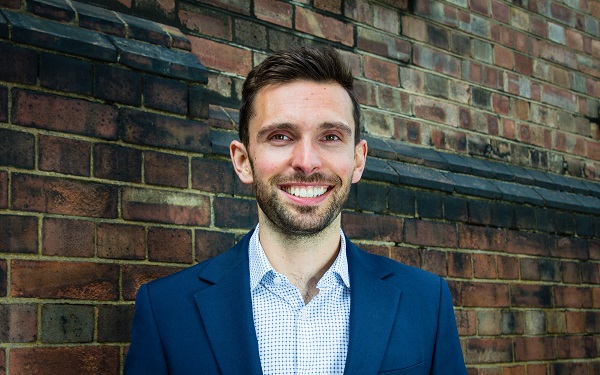
Extra funding for children’s social care reform in the spending review shows the government is delivering on the Independent Review of Children’s Social Care’s recommendations, according to the backbench Labour MP who led the inquiry.
Frontline founder Josh MacAlister said the funding for reform announced by chancellor Rachel Reeves, up to 2028-29, took total spending allocated to overhauling children’s social care since 2023 up to the £2.6bn he said was required to transform the system in his review, which reported in 2022.
The extra funding was also hailed by chief social worker for children and families Isabelle Trowler, while receiving a cautious, but positive, welcome from sector bodies.
£555m to ‘transform’ children’s services
Delivering the spending review in the House of Commons yesterday, Reeves announced £555m of additional funding “so that children do not go needlessly into care when they could stay at home” and to ensure “better care and better outcomes” for looked-after children.
The money will be delivered from 2025-28 as part of a wider government transformation fund, and is in addition to £25m already allocated within the same fund to boost foster care recruitment and support from 2025-27.
The Treasury said that the additional resource would enable investment in preventive provision that “avoids a family’s needs escalating, reducing costs and demand” while also expanding support for care leavers and fixing “the broken care market” through measures in the Children’s Wellbeing and Schools Bill. These include:
- A duty on councils to consider whether care leavers aged up to 25 require “staying close support” and, where their welfare requires it, to offer that support, which includes helping them find and keep suitable accommodation and access services relating to their health and wellbeing.
- A new DfE-run financial oversight regime for the hardest-to-replace care providers, designed to identify and tackle risks to the provision of care to children.
- Powers for the DfE to direct councils to set up so-called regional care co-operatives, to commission and provide care placements regionally to improve the quality and sufficiency of provision.
- A new type of placement for children at risk of being deprived of their liberty.
Family help funding continued
Alongside the £555m fund for 2025-28, the government has committed to continue £523m in annual funding allocated this year for children’s social care reform for the next three years (2026-29).
The funding this year combined a new grant children’s social care prevention grant, worth £270m, with £253m previously allocated to the now disbanded Supporting Families programme, under which key workers were allocated to support families with multiple needs. The combined resource is designed to:
- Implement multidisciplinary family help teams, which are designed to provide families receiving targeted early help, child in need and child protection services with a consistent lead practitioner to deliver direct work and co-ordinate support to keep children with their parents wherever safe.
- Introduce multi-agency child protection teams, including specialist social workers and practitioners from education, health and police, to improve the quality of safeguarding practice. The teams are being introduced through the Children’s Wellbeing and Schools Bill.
- Offer families at the pre-proceedings stage a family group decision making meeting, designed to enable them and their wider network to come up with plans to avoid their children going into care. This is also being introduced through the bill.
Extra resource for residential and foster homes
The spending review also includes £560m in capital funding to refurbish and expand the children’s home estate and boost foster care provision, for example, by enabling carers to extend their homes to accommodate more children.
This follows £90m provided by Labour for the renovation and development of children’s homes, including secure units, in 2025-26 and £259m from 2022-25 and £165m, from 2024-28, allocated by the previous Conservative government.

Photo: chrupka/Adobe Stock
It is not clear if there is any overlap between the £165m announced by the Conservatives, shortly before they left power, and the money allocated by Labour for children’s homes development since coming to office in July 2024.
Funding ‘matches care review’s £2.6bn’ – MacAlister
In the final report of his children’s social care review, published in 2022, MacAlister called for £2.6bn of new spending to be invested over four years to transform the system. The bulk of this (£2bn) would be in family help, with the rest invested in the workforce, supporting family networks, recruiting foster carers, boosting care placements and enhancing support for care leavers.
He argued that this would reduce the numbers of children in care by about 30,000 (30%) in 10 years, compared with the status quo, releasing savings that could be reinvested into social care services and ensuring the reforms paid for themselves over the long term.
In a post on X yesterday, the Labour MP argued that the additional funding announced in the spending review, excluding the £560m in capital investment, meant his £2.6bn target had been reached, taking into account money previously allocated by the Conservatives and Labour. He said this comprised:
- £200m allocated by the Conservatives from 2023-25.
- £322m provided by Labour for 2025-26, including the £270m children’s social care prevention grant and £44m designed to boost foster care recruitment and trial providing some kinship carers with financial allowances.
- The £555m in transformation fund announced in the spending review from 2025-28.
- £1.57bn for family help (£523m a year) from 2026-29.
‘Real optimism about chances of resetting children’s social care’
The funding referred to by MacAlister is being delivered over a six-year period, compared to the four-year timeframe recommended by his review.
Also, the money he is counting for family help from 2026-29 includes the £253m a year provided previously through the Supporting Families programme, meaning it is arguably not the “new funding” that his review recommended.
Nevertheless, he said: “That’s the Labour government seriously delivering on the recommendations of the review. I’ve got real optimism about our chances of resetting the children’s social care system in the next few years. It won’t all go perfectly. But everyone who contributed to the review, who works in the system, or who relies on it should feel a big boost after today!”
On LinkedIn, Trowler declared herself “utterly delighted” with the spending review outcome, in reposting a message from Daniel Foster, deputy director – children’s social care strategy. For his part, Foster said he was “really proud” of his team for having secured the extra investment for social care, which provided a “great opportunity to improve the lives of thousands of children and families”.
‘A unique opportunity to help children realise full potential’
There was a more cautious – though broadly positive – response from sector bodies to the spending review.
Association of Directors of Children’s Services president Rachael Wardell said: “It is good to see the government commit more than a billion pounds over the next three years to support the continued transformation of children’s social care and investment in improving and developing placements for children in care.”

Rachael Wardell (photo supplied by ADCS)
“Too many children and young people are being left without the support they need to thrive, with long waits and under-resourced services leaving families struggling. This spending review period provides a unique opportunity to transform this experience and ensure every child and their family can benefit and realise their full potential.”
‘A significant step towards a family-first child welfare system’
For the Family Rights Group, chief executive Cathy Ashley said the extra children’s social care funding, along with other measures, constituted “a significant step towards delivering the ambition of a family-first child welfare system”.
“The need for urgent action is clear,” she added. “There are record numbers of children in the care system, many isolated living far away from family and friends.
“One in three children are living in poverty and families are struggling to parent in conditions of adversity. Children and families often can’t get the help they need early when problems arise. Kinship families raising the children of relatives or friends are stepping up and yet it is often a battle to access support. Local authorities and public services are overwhelmed.”
‘More information needed on how money will be spent’
Fellow charity Kinship said it was “pleased the government’s spending review includes a £555m investment in children’s social care reform to help keep more children within their families”.
However, chief executive Lucy Peake added: “We need more information as soon as possible on how this investment will be spent. It’s vital that it supports the urgent delivery of improved financial, practical and emotional support for all kinship carers who step up to keep children within loving stable homes and out of the care system.”
She added: “We are eager to learn more information about the long-awaited trial of a kinship allowance for kinship carers announced last autumn, including how this will lead to a wider rollout of financial support for all kinship families.”
The resources for social care reform is in addition to the government’s funding settlement for local authorities for 2026-29, which was also announced in yesterday’s review. Under this, the total amount available to councils will grow by 2.6% per year in real terms from 2026-29, dependent on authorities with social services responsibilities raising council tax by 5% in each of the three years.





 Bournemouth, Christchurch and Poole
Bournemouth, Christchurch and Poole  Hampshire County Council
Hampshire County Council  Oxfordshire County Council
Oxfordshire County Council  South Gloucestershire Council
South Gloucestershire Council  Wokingham Borough Council
Wokingham Borough Council  Providing a lifeline for social workers who want to get back into the sector
Providing a lifeline for social workers who want to get back into the sector  The highs and lows of a children’s services’ transformation journey
The highs and lows of a children’s services’ transformation journey  Embedding learning in social work teams through a multi-agency approach
Embedding learning in social work teams through a multi-agency approach  The family safeguarding approach: 5 years on
The family safeguarding approach: 5 years on  Harnessing social work values to shape your career pathway
Harnessing social work values to shape your career pathway  Workforce Insights – showcasing a selection of the sector’s top recruiters
Workforce Insights – showcasing a selection of the sector’s top recruiters  Join our team to help technology enabled care transform lives in Nottinghamshire
Join our team to help technology enabled care transform lives in Nottinghamshire  Free CPD on Parkinson’s for health and social care staff
Free CPD on Parkinson’s for health and social care staff 

 Facebook
Facebook X
X LinkedIn
LinkedIn Instagram
Instagram
No comments yet.